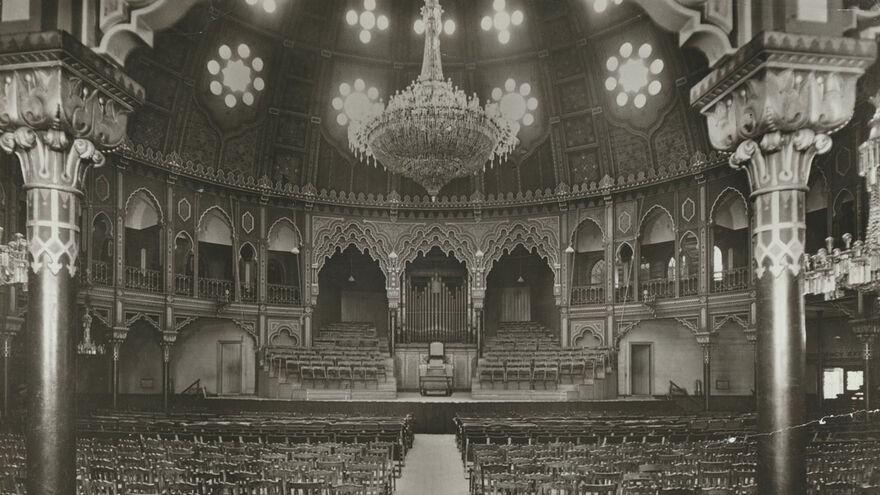
Brighton Dome opens its doors to the past with heritage events
Brighton Dome is inviting visitors to travel back in time to discover the building’s fascinating history at a series of events starting this autumn.
From housing the Price Regent’s horses to sheltering wounded soldiers; roller-skating Victorians to ABBA winning Eurovision, Brighton Dome has seen some unexpected moments throughout its 200-year history. The Grade I listed building, set within the city’s famous Royal Pavilion Estate, has had an illustrious past and is about to reveal some new and unexpected stories. The National Lottery Heritage Fund is supporting the programme as part of their £5m contribution towards the refurbishment of Brighton Dome’s Corn Exchange and Studio Theatre.
Kate Richardson, Participatory Interpretation Manager at Brighton Dome said:
‘Through the Corn Exchange and Studio Theatre renovation project, we’ve had the opportunity to research the physical and social aspects of the building’s history. Recording and preserving the heritage of this iconic Brighton venue is so important for future generations and these events offer anyone interested in local history or fans of theatre and music, a valuable insight into the workings of a famous venue throughout the ages.’
Backstage Tours allow behind the scenes access around Brighton Dome’s Concert Hall - from peeking into the artists’ dressing rooms; standing on the stage where legendary musicians have performed to a rare glimpse of the King George IV’s infamous secret underground tunnel to the Royal Pavilion. The monthly small group tours are led by experienced Dome staff who will reveal what goes on behind closed doors.
Discover more about the history of the Royal Pavilion and the surrounding estate from curator Dr Alexandra Loske, in her lunchtime talk, Moving Interiors: The Royal Pavilion Through The Ages on Fri 4 Oct. From its humble beginnings as a lodging house to an exotic royal residence, Loske will explain the ideas behind the extravagant interiors.
During wartime, Brighton Dome played a pivotal role as a temporary hospital in the First World War caring for over 4,000 Indian soldiers and in World War II, the venue offered a welcome distraction by hosting tea dances and organ concerts. In the lead up to Remembrance Sunday, find out more about the social history of these turbulent times with talks and tours in a free open day on Sat 3 Nov.
On Fri 6 Dec, explore The Transformation of Brighton 1790-1830 with lecturer and researcher Dr Sue Berry. Brighton grew rapidly from 1790 as hundreds of soldiers moved to the city due to a fear that it might be an ideal landing place for a French invasion. From 1815, people wanted larger houses to entertain friends, a trend which influenced the growth of areas such as Brunswick and Kemptown, as well as the development of tourist attractions and the promenade.
Celebrate the incredible range of female artists that have graced the Brighton Dome stage over the past 150 years. On Fri 7 Feb, historian Louise Peskett will speak about the history of Women in Entertainment. From the divas of the silver screen to all-female jazz bands and performers who gave birth to rock n roll.
Can’t wait for Brighton Festival 2020? Hear about the history of the oldest arts festival in the UK just before it kicks off next May. On Fri 24 Apr, find out how a street party for 7000 residents in 1814 became the celebration it is today, as local writer and former Festival Director Philip Morgan discusses some of the highlights over the past 53 years.
For tickets or further information visit our What's On page.
